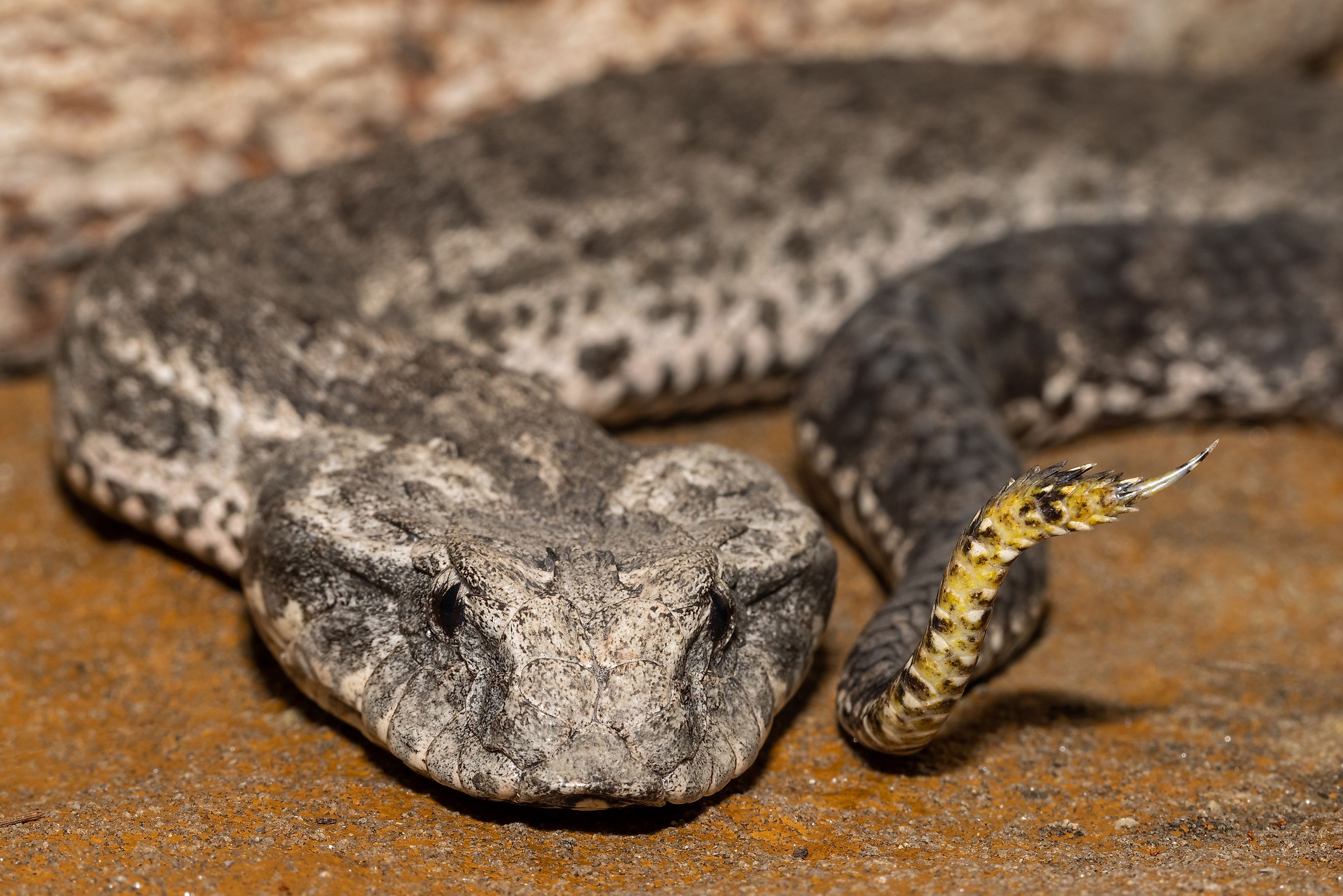
11 Most Venomous Snakes in Victoria
Venomous snakes are prevalent throughout Victoria, Australia, posing significant risks to residents and visitors. Among these, the Eastern Brown Snake is particularly dangerous, known for its agility and potent venom. This species, along with others like the Tiger Snake and Lowland Copperhead, are adapted to varied environments across Victoria. Their bites require immediate medical intervention due to their potential lethality. Understanding and respecting their habitats is crucial for safety and preventing unfortunate encounters. Below we discuss 11 snakes to watch out for in Victoria.
King Brown Snake (Mulga Snake)
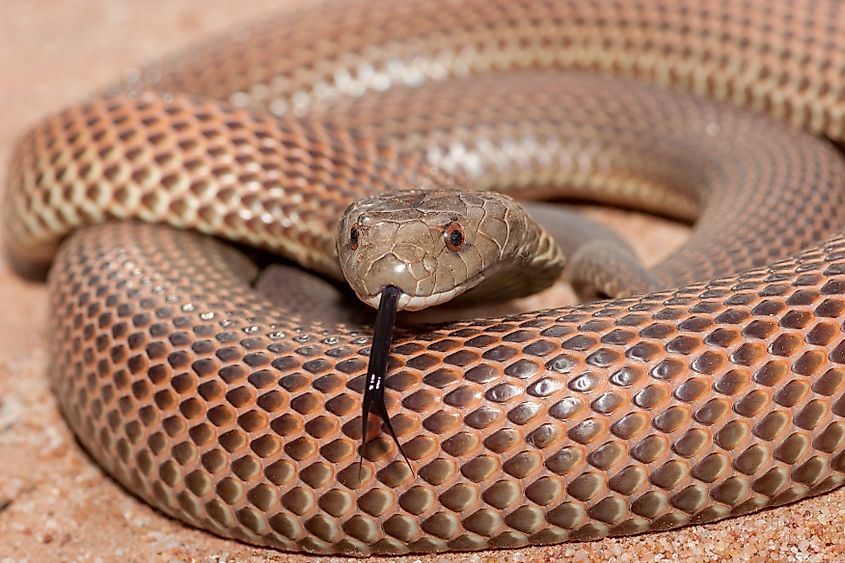
The King Brown Snake, or Mulga Snake, predominantly found in Australia's harsh interiors and parts of coastal areas, is a formidable creature. Notably present in Queensland, New South Wales, and possibly the far northwest of Victoria, its range extends into the Northern Territory and much of Western Australia. Characterized by its variable coloration, which can range from copper brown to dark olive and sometimes almost black in southern regions, the King Brown can reach up to 3 meters in length, with an average of 1.5 to 2 meters. The snake's heavy build and less distinct neck make it robust, and its small eyes feature a round pupil with a black iris. Preferring a wide range of habitats, from forests and woodlands to plains, it often occupies rabbit holes or shelters under rocks and logs. This nocturnal predator becomes more active at night, especially in hotter conditions, displaying aggression when threatened, often inflicting multiple bites and chewing at the bite site. Despite not all bites resulting in envenomation, its venom is potent, potentially lethal, making prompt and correct first aid followed by antivenom administration crucial.
Red Bellied-Black Snake
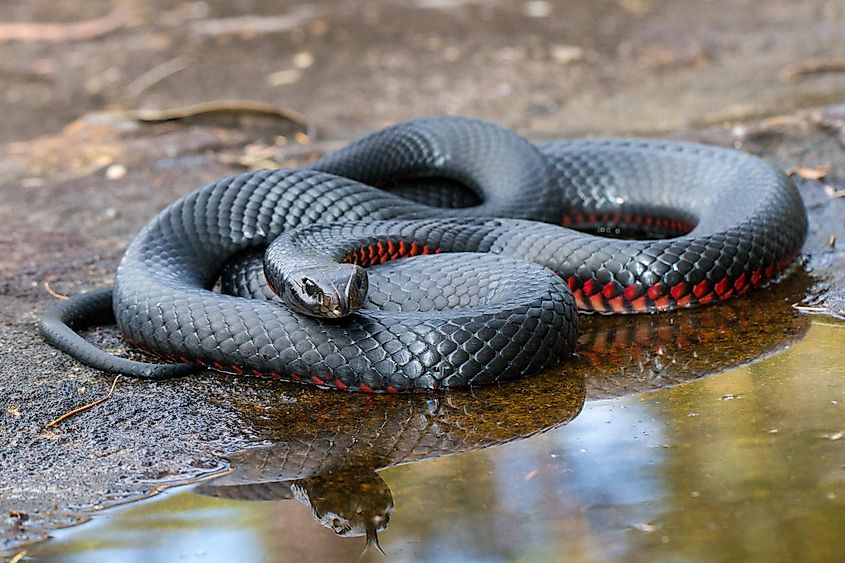
The Red-Bellied Black Snake, found along the eastern parts of Australia including Queensland, New South Wales, Victoria, and parts of southeastern South Australia, is a striking but moderately dangerous serpent. Its glossy black back and distinctive red or pinkish sides and belly, extending to the underside of its tail, make it easily recognizable. This species can grow up to 2.5 meters, though the average size is between 1.2 and 1.5 meters. Favoring watery environments like swamps, rivers, and creeks, it is often spotted under rocks or logs near bodies of water. Active during the day, it preys on frogs, fish, and small mammals. Despite its fearsome appearance, the Red-Bellied Black Snake is generally reluctant to bite and prefers to avoid confrontation by moving away or displaying bluffing behaviors when cornered. Bites are infrequent and rarely fatal, but immediate and correct first aid followed by medical treatment, if necessary, is crucial.
Common Brown Snake (Eastern Brown Snake)
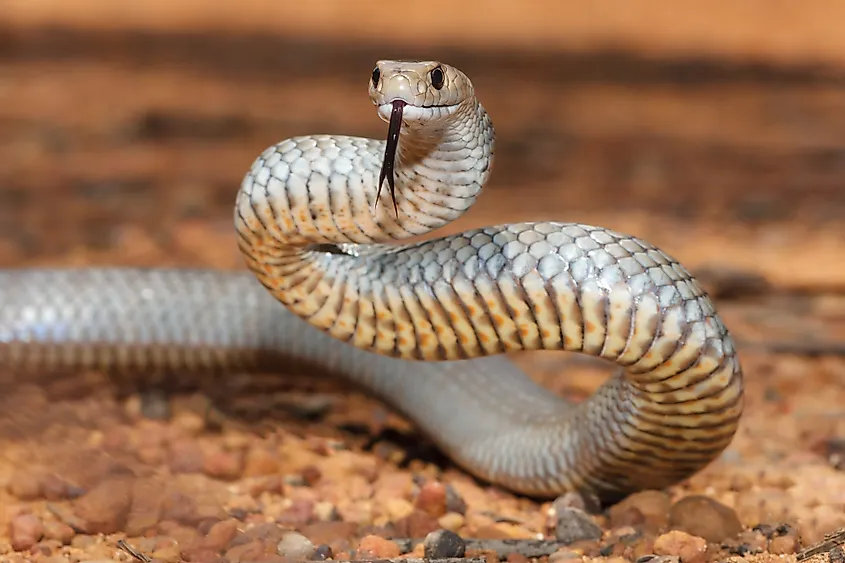
The Common or Eastern Brown Snake, found throughout Queensland, New South Wales, Victoria, southeastern South Australia, and parts of inland Northern Territory, is a highly venomous species known for its agility and potent venom. This snake exhibits a wide range of colors from pale grey-brown to dark brown, and its underside is typically cream or yellow with possible orange or grey blotches. The Eastern Brown reaches a maximum length of about 2 meters, with the average being around 1.5 meters. It prefers dry forests, grasslands, and arid zones, where it preys on small mammals like mice and frogs. Known for its swift movements, this snake is primarily active during the day. If threatened, it can display a distinctive defensive posture by raising the front part of its body in an 'S' shape before striking. Bites often occur without provocation and may result in multiple rapid strikes, typically aiming high on the limbs. Although not all bites deliver venom, the venom can be deadly, necessitating immediate medical intervention with proper first aid and antivenom administration.
Five-Ringed Brown Snake (Ringed Brown Snake)
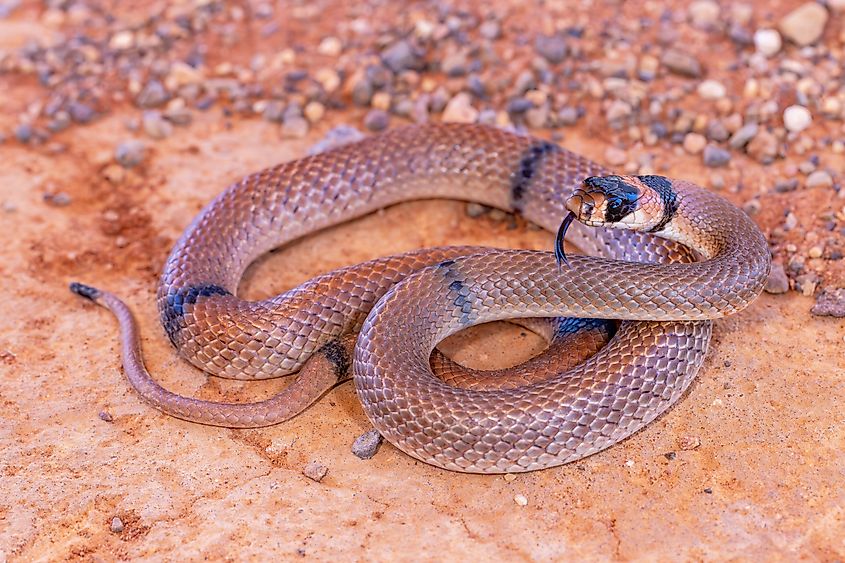
The Five-Ringed or Ringed Brown Snake, a less commonly encountered species, is found predominantly in the far corners of Western Australia, Western and Northeastern Queensland, Western New South Wales, Northern South Australia, and much of the Northern Territory, with possible occurrences in the far northwest of Victoria. This species is recognized by its slender build and the distinctive narrow black cross-bands that adorn its olive, tan, pale grey-brown, or reddish-brown back. These bands are spaced about 6-10 cm apart and may fade or disappear in larger specimens. The snake’s head is often dark, blending almost seamlessly into the neck with a broad stripe across the back of the neck. It reaches a modest size of about 0.5 to 0.6 meters. Generally less aggressive than other brown snakes, the Five-Ringed Brown Snake inhabits diverse environments but is typically less confrontational. While its bite rarely delivers venom, it is still considered potentially dangerous, and victims should receive immediate medical attention including correct first aid and antivenom if necessary.
Gwardar Snake (Western Black Snake)
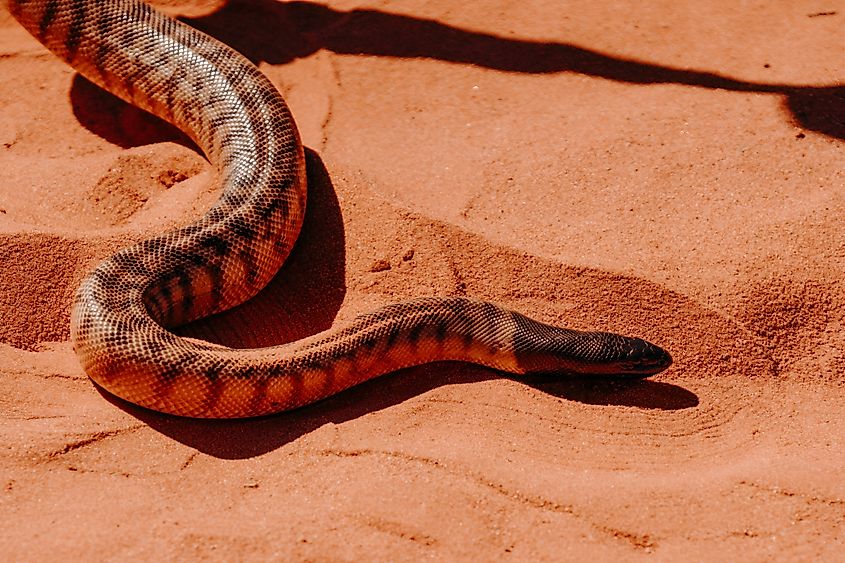
The Gwardar or Western Brown Snake is a highly venomous species prevalent across much of Australia, including the northwest corner of Victoria. This adaptable snake is found in various habitats from desert to woodland and is known for its significant variability in appearance, possibly comprising up to 5-7 subspecies. Its coloration ranges from whitish, olive-grey, yellow, orange, red, light to dark brown, or nearly black, with some individuals displaying bands or speckled patterns. The Western Brown Snake can reach up to 2 meters, though the average size is about 1.4 to 1.5 meters. It is fast-moving, mostly active by day in southern regions, and shifts to nocturnal activity in hotter northern climates. Although it is generally less aggressive, it will defend itself vigorously when provoked, capable of multiple rapid strikes, often leaving scratches rather than distinct fang marks. While not all bites result in envenomation, those that do can be deadly, necessitating prompt and correct first aid followed by medical treatment, including antivenom administration.
Copperhead Snake
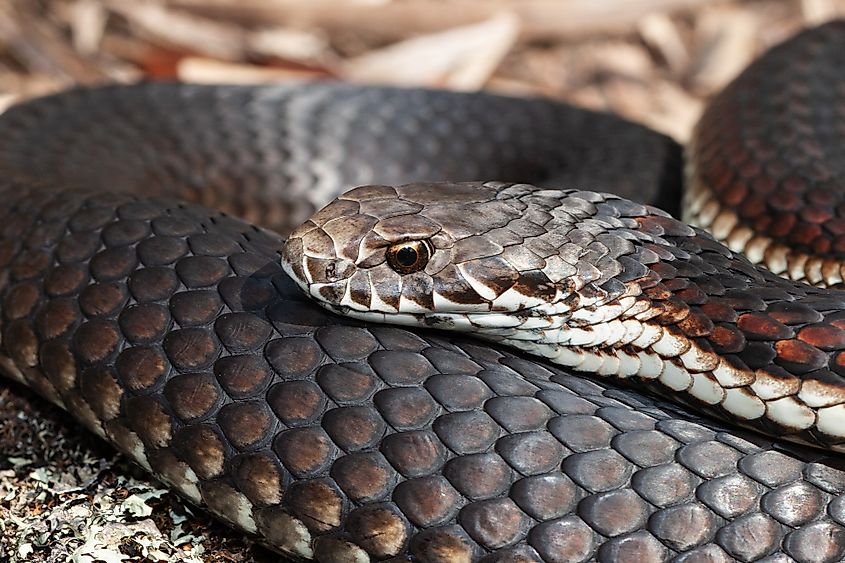
The Copperhead snakes in Victoria, Australia, are divided into three subspecies: the Highlands or Alpine, the Lowlands, and the Dwarf or Pygmy Copperhead. The Highlands Copperhead typically inhabits higher, cooler altitudes in upland regions of eastern Victoria, displaying a dark slate-grey coloration with a yellowish underside and distinctive white-and-brown striped lips. The Lowlands Copperhead, found mainly in southern Victoria and adjacent areas, shows a more variable color from dark brown to reddish, often featuring a pink or red side stripe and a dark neck band. The Dwarf Copperhead, generally darker and marked with lip barring, is smaller, found on Kangaroo Island and south of the Mt Lofty Ranges in South Australia. These snakes prefer swampy or marshy environments but are also capable of climbing and are active during cooler conditions. Typically non-aggressive, Copperheads are potentially dangerous; however, their bites are infrequent and rarely fatal but require prompt medical treatment.
Death Adder Snake
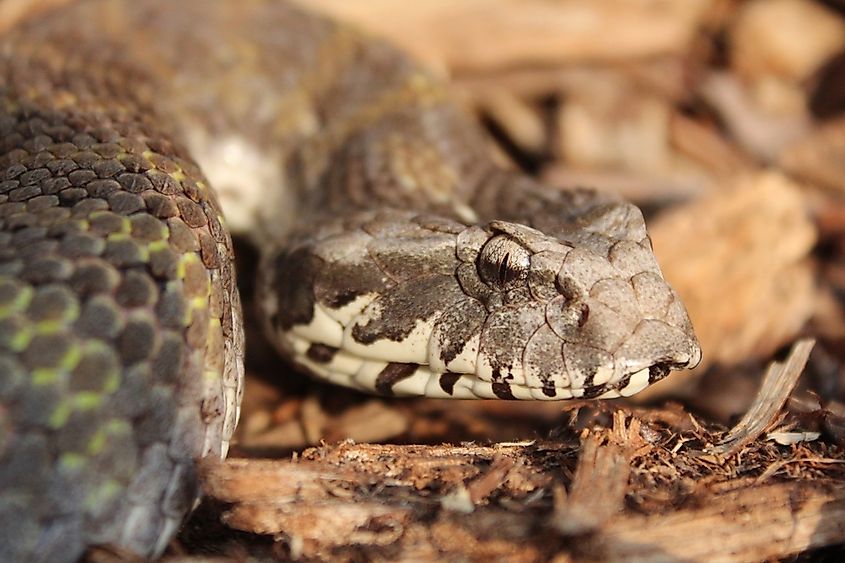
Death Adders in Victoria are represented by the Common Death Adder, typically found in the northwest tip of the state. Characterized by their thickset, short bodies and distinct, almost triangular heads, Death Adders are easily distinguishable from other snakes. Their coloration varies from light brown to black with potential lacy, tiger-like stripes across the body. Juveniles may exhibit different colorings. These snakes inhabit areas with leaf litter, loose sand, or gravel, and are typically active during warm nights. They employ a unique hunting tactic of lying in wait, camouflaged, and striking rapidly when prey or a threat is detected. Although sluggish and placid, if trodden upon, they react with a swift, low-level bite that can be fatal without prompt medical intervention. Death Adders are very dangerous due to the potency of their venom, requiring immediate first aid and hospital treatment to manage envenomation.
Sea Snakes
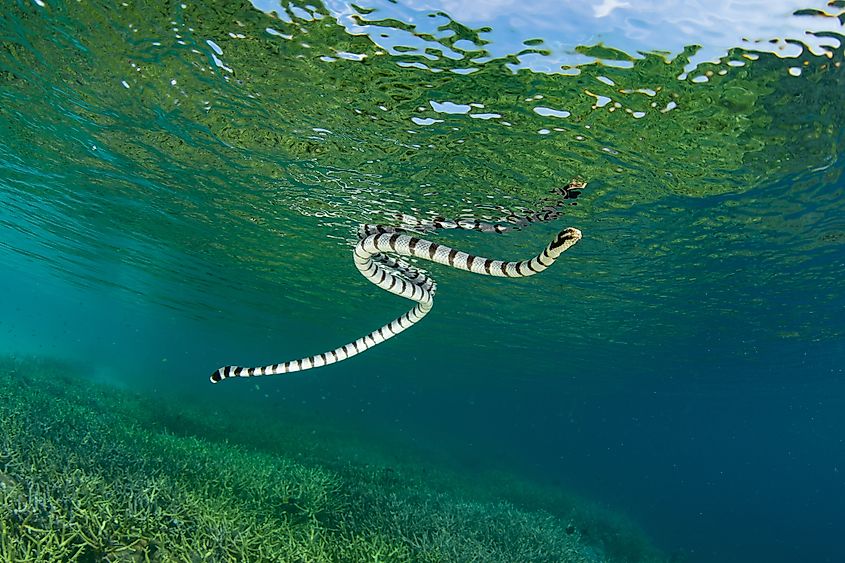
Sea snakes in Victoria's waters, including around 12 different species, are an intriguing and potentially dangerous presence. These snakes, which range from Sydney to Perth and include a few species in Victoria, South Australia, and Tasmania, typically have a flattened tail for swimming, except for the Sea Kraits. Their coloration varies widely, featuring shades of brown, grey, creamy-white, and sometimes black or purplish hues, with distinctive patterns like black and yellow rings or blotches. The Yellow-bellied Sea Snake is notable for its stark black upper side and brightly colored underside. Sea snakes vary in length from 0.6 to 1.5 meters, with some reaching up to 2 meters. They inhabit diverse marine environments—from coral reefs to the upper tidal reaches of rivers and open ocean waters. While generally not aggressive, sea snakes are venomous, ranging from potentially to very dangerous. Bites can cause severe illness or death, necessitating immediate and correct first aid along with hospital treatment with antivenom.
Small-Eyed Snake
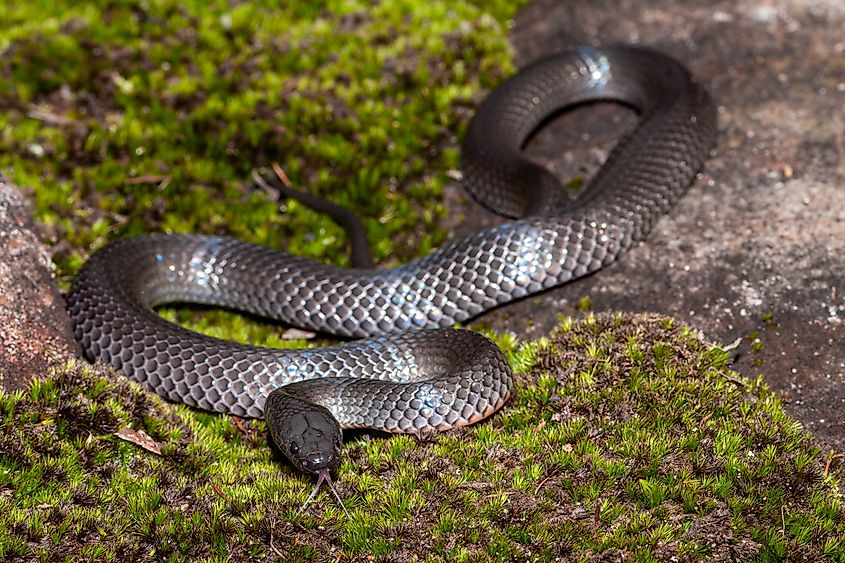
The Small-Eyed Snake, found in the eastern third of Victoria, is a secretive and potentially dangerous species. Characterized by its shiny, very dark grey or black back, this snake often sports a contrasting underside that may be white, cream, or bright pink, sometimes marked with dark blotches. It closely resembles juvenile Red-bellied Black Snakes and can be mistaken for other black snakes or even some Tiger Snakes. With an average length of 0.5 meters and a maximum of 1.2 meters, the Small-Eyed Snake prefers to remain hidden under rocks, logs, or debris during the day and is active at night. It inhabits a variety of environments, from rainforests to coastal heaths. While generally not aggressive, this snake is venomous and has been linked to at least one human fatality, underscoring the need for caution and immediate medical attention in case of a bite.
Eastern Tiger Snake (Mainland Tiger Snake)
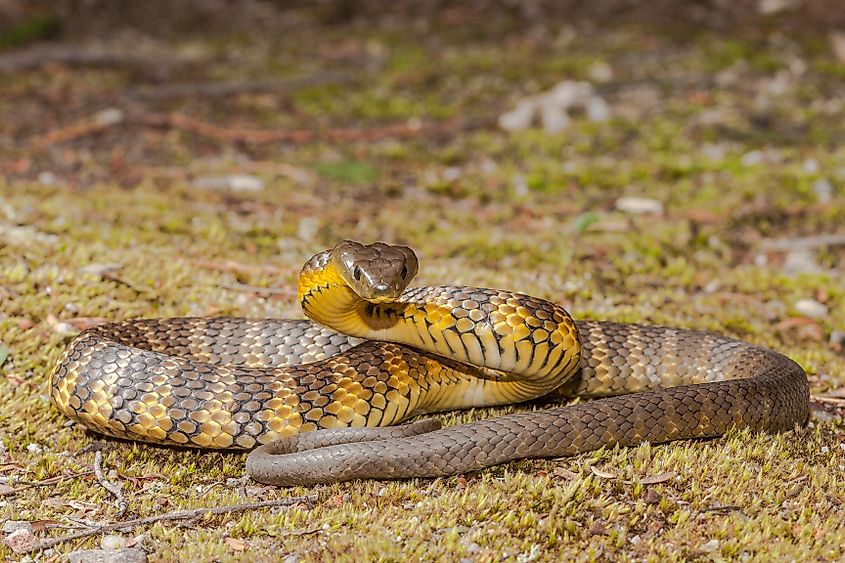
The Eastern or Mainland Tiger Snake, primarily found along the Murray River valley in Victoria, is a highly venomous and variable species. Its color ranges from light grey to olive, reddish brown, orange, or dark brownish black, with some individuals displaying banded patterns of narrow, yellowish cross-bands, while others may be unbanded. Juvenile Common Brown Snakes are frequently mistaken for young Tiger Snakes due to similar banding. Typically reaching up to 1.2 meters in length, Tiger Snakes are active during the day or at night in hotter conditions. Though generally not aggressive, they will defend themselves if provoked, inflating their body and flattening their head and neck as a threat display before striking. Recognized for their dangerous venom, Tiger Snakes pose a serious risk to humans, with bites potentially causing severe illness or death. Immediate medical attention, correct first aid, and antivenom administration are crucial for bite victims.
Bardick Snake
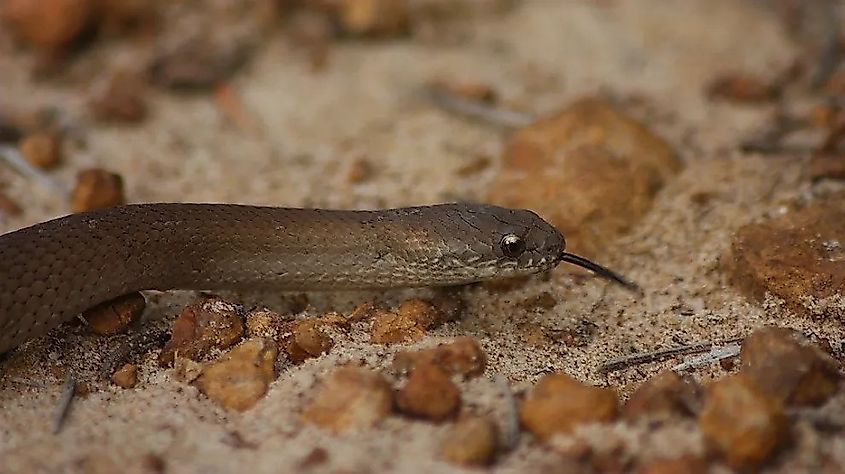
The Bardick, primarily found in western and northwestern Victoria, is a lesser-known species of snake characterized by its variable back color, which can range from grey, olive, brown, to brick-red. Its lips are often dotted with white, and pale flecks may adorn the head, neck, and sides. The underside typically appears cream to grey or pale brown-grey, sometimes salmon-colored. The Bardick is relatively small, with an average length of 0.3 meters and a maximum of 0.6 to 0.7 meters. Active nocturnally, it is often encountered in arid areas. While its venom toxicity remains uncertain, some bites could potentially mirror the symptoms of a Death Adder envenomation, necessitating prompt and correct first aid. Misidentification with the more dangerous Death Adder poses an additional risk, highlighting the importance of caution and possibly the need for antivenom treatment in hospital settings.











